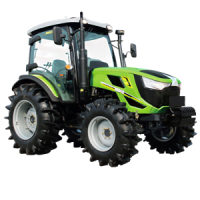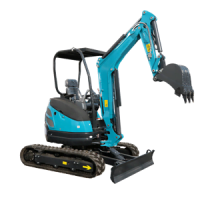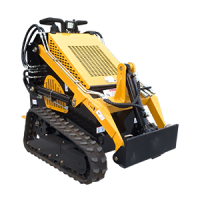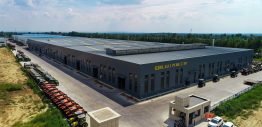1. Introduction
The Power Behind Excavator Backhoes
Excavator backhoes are the workhorses of construction and excavation projects, known for their impressive digging and loading capabilities. At the heart of these powerful machines lies a remarkable technology: hydraulic systems. In this comprehensive guide, we will delve into the intricacies of hydraulic systems in excavator backhoes, exploring how they work, their components, maintenance, troubleshooting, and the latest advancements in hydraulic technology. Join us as we uncover the hydraulic wizardry that makes excavator backhoes the versatile and indispensable tools they are.
2. Basics of Hydraulic Systems
2.1. Hydraulic Fluid
Hydraulic systems rely on a specialized fluid that transmits force and lubricates components. This hydraulic fluid, typically mineral-based oil, is pressurized and circulated throughout the system.
2.2. Hydraulic Pump
The hydraulic pump is the heart of the system. It converts mechanical energy from the engine into hydraulic energy by pressurizing the hydraulic fluid. This pressurized fluid is then used to perform work.
2.3. Hydraulic Cylinders
Hydraulic cylinders are responsible for converting hydraulic energy back into mechanical energy. They provide the force required to move various parts of the excavator, such as the boom, arm, and bucket.
3. Components and Functionality
3.1. Control Valves
Control valves regulate the flow and direction of hydraulic fluid within the system. They determine which hydraulic cylinders receive pressurized fluid and in which direction they move.
3.2. Hydraulic Filters
Hydraulic filters are essential for maintaining the cleanliness of the hydraulic fluid. They remove contaminants and particles, ensuring the smooth operation of the system and preventing damage to components.
3.3. Reservoirs and Accumulators
Reservoirs store hydraulic fluid, while accumulators store pressurized gas, providing a source of energy for rapid and powerful movements. These components help maintain system stability.
4. Operating the Hydraulic System
4.1. Main Control Levers
Excavator backhoe operators use main control levers to manipulate the hydraulic system. These levers determine the speed and direction of movements, allowing precise control over digging, lifting, and dumping.
4.2. Joysticks and Pedals
Secondary controls, such as joysticks and pedals, fine-tune the operation. Joysticks are often used for controlling attachments, while pedals may control the speed of hydraulic movements.
4.3. Precision and Responsiveness
The responsiveness of hydraulic systems allows for delicate and precise movements, making it possible to perform tasks with accuracy even in tight spaces or around sensitive structures.
5. Hydraulic System Maintenance
5.1. Fluid Checks and Changes
Regular fluid checks and changes are crucial to maintaining hydraulic system performance. Contaminated or degraded hydraulic fluid can lead to reduced efficiency and potential damage.
5.2. Filter Replacements
Hydraulic filters should be replaced according to the manufacturer’s recommendations. Clogged filters can lead to pressure drops and compromised operation.
5.3. Preventing Hydraulic Leaks
Inspecting hoses, fittings, and seals for wear and damage is essential to prevent hydraulic leaks. Even small leaks can lead to reduced efficiency and environmental concerns.
6. Troubleshooting Hydraulic Issues

6.1. Slow or Erratic Movements
Slow or erratic hydraulic movements can be indicative of issues such as low fluid levels, clogged filters, or damaged valves. Systematic troubleshooting can help pinpoint the cause.
6.2. Overheating
Hydraulic system overheating can result from various factors, including excessive workloads or inadequate cooling. Proper maintenance and workload management can mitigate overheating risks.
6.3. Noises and Vibrations
Unusual noises or vibrations in the hydraulic system may signal problems like cavitation or air in the system. Identifying and addressing these issues promptly is essential.
7. Advancements in Hydraulic Technology
7.1. Variable Displacement Pumps
Variable displacement pumps allow for more precise control of hydraulic flow, optimizing power usage and improving efficiency.
7.2. Electronic Control Systems
Electronic control systems integrate sensors and feedback mechanisms, enhancing operator control and allowing for advanced features like load-sensing.
7.3. Hybrid Hydraulic Systems
Hybrid hydraulic systems combine hydraulic and electronic components, providing the benefits of both worlds, such as improved fuel efficiency and reduced environmental impact.
8. Applications Beyond Excavator Backhoes
8.1. Hydraulic Systems in Other Machinery
Hydraulic systems are not exclusive to excavator backhoes. They are integral to a wide range of heavy machinery, from bulldozers to cranes and beyond.
8.2. Hydraulic Tools and Attachments
Hydraulic technology extends to various tools and attachments, including jackhammers, grapples, and shears, enhancing their power and versatility.
9. Foire aux questions (FAQ)
Q1. How do excavator backhoe operators learn to control the hydraulic system?
Operators undergo comprehensive training to learn the intricacies of hydraulic controls, allowing them to operate the machine safely and efficiently.
Q2. What maintenance tasks can operators perform on the hydraulic system?
Operators can perform basic maintenance tasks such as fluid level checks and leak inspections. However, more complex maintenance and repairs should be handled by trained technicians.
Q3. Can hydraulic systems be retrofitted with advanced technology?
Yes, many older pelle backhoes can be retrofitted with modern hydraulic systems and controls to improve performance and efficiency.
Q4. Are there environmentally friendly hydraulic fluid options available?
Yes, biodegradable and eco-friendly hydraulic fluids are available, reducing environmental impact in case of leaks or spills.
10. Conclusion
Hydraulic systems are the beating heart of excavator backhoes, providing the power and precision needed for their remarkable capabilities. Understanding how these systems work, their components, and the importance of maintenance and troubleshooting is essential for both operators and equipment owners. With ongoing advancements in hydraulic technology, these machines continue to evolve, becoming more efficient, environmentally friendly, and versatile. As we look to the future, hydraulic systems will remain at the core of heavy machinery, driving progress and innovation in the construction and excavation industries.






-1.png)